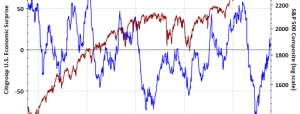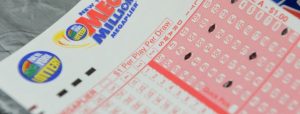The Dollar Comes Back Bid – Thursday, Feb. 6
Image Source: Overview: After the tariff scare on Monday, which saw the US dollar surge, it has pulled back in the last couple of day. But it has returned bid today in what looks like position-squaring ahead of tomorrow US employment report. Despite some Fed officials recognizing that the tariffs may pose a supply shock that has to be taken into account, the odds of a June cut and two before the end of the year increased marginally yesterday, even as coupon yields fell. The greenback is heavier against all the G10 currencies but is straddling unchanged levels against the Japanese yen. Ahead of what widely expected to be a Bank of England rate cut shortly, sterling is the heaviest of the major currencies, off around 0.6%, and nearly 1.25-cents from yesterday’s high. Most emerging market currencies are softer today. Mexico’s central bank may cut by 50 bp today, and the peso is trading with a lower bias. Equities are mostly higher today. In the Asia Pacific region, the large bourses, led by China and Hong Kong rose. India is an exception, and the market is nursing a small loss. The central bank is expected to cut rate first thing tomorrow to begin an easing cycle. The Stoxx 600 in Europe is up around 0.8%, which if sustained, would be the largest gain in three weeks. US index futures are slightly firmer. European benchmark 10-year rates are mostly little changed. The 10-year UK Gilt yield is off 1.5 bp, the most […]
USD/JPY Outlook: Hawkish BoJ Strenghtens Case For Another Hike
The USD/JPY outlook indicates a surge in expectations for another BoJ rate hike this year after hawkish policymaker remarks. Meanwhile, the dollar traded near an eight-week low against the yen after Trump’s tariffs failed to take off in Canada and Mexico, easing fears of global trade wars.Hawkish BoJ policymaker Naoki Tamura said on Thursday that the central bank should raise rates to 1% by the end of 2025. After these remarks, market participants were pricing a 98% chance of another rate hike by September. As a result, the yen rallied. The BoJ maintained a cautious tone towards the end of 2024. However, since Trump’s inauguration, policymakers have gained motivation to keep rates high. The new administration’s policy changes might strengthen the dollar, putting pressure on the yen. Moreover, recent data from Japan has revealed stronger wage growth and high inflation, giving the BoJ enough room to hike rates. On the other hand, the dollar remained fragile after a pause in some of Trump’s tariffs on Tuesday. Initially, the US currency gained from the prospect of tariffs on Canada, Mexico, and China. However, Canada and Mexico managed to negotiate with the US, leading to a pause. Since then, market participants have viewed these tariffs as negotiating tactics, pushing the dollar lower. Meanwhile, traders are looking forward to the US nonfarm payrolls report for more clues on future Fed moves. USD/JPY key events today US unemployment claims USD/JPY technical outlook: 152.00 support halts sharp decline(Click on image to enlarge)USD/JPY 4-hour chartOn the technical side, the price has […]
US Dollar Bounces Off Support After Softening Stance From President Trump
The US Dollar is starting to recover against most major peers in the G10 space. US President Trump released some easing comments and remarks, softening the risk-off tone in markets. The US Dollar Index (DXY) is trying to pop back above 108.00. The US Dollar Index (DXY), which tracks the performance of the US Dollar against six major currencies, ticks up in the European trading session on Thursday, trading slightly below 108.00 at the time of writing. The move comes after comments from US President Donald Trump revealing his intentions to take over Gaza and reach a nuclear deal with Iran. Besides that, a plan to end the war in Ukraine will probably be put on the table either this or next week by the Trump administration as well. On the front, comments from US Treasury Secretary Scott Bessent sparked some support in US yields. Bessent said that the Trump administration wants to bring down 10-year Treasury yields, not the Federal Reserve’s (Fed) benchmark short-term interest rate, Bloomberg reports. For this Thursday, the weekly US Jobless Claims are due, ahead of Friday’s print. Daily digest market movers: BoE draws attention The Bank of England (BoE) has released its monetary policy decision. As expected a 25 basis point (bps) rate cut was applied to 4.50% from 4.75%. The vote split was 7 in favor for a 25 basis point rate cut against 2 votes for a 50 basis points rate cut. At 12:30 GMT, the US Challenger Job Cuts for January are due. No […]
USD/JPY Forecast: Plunges To Key Support
So, I’m not really wanting to short the dollar against the yen. I’m more or less waiting to see how it behaves in this general vicinity. What’s of particular interest to me is that we are right at the 200 day EMA and we did stop. So, it’ll be interesting to see if it holds. Non-Farm Payroll(Click on image to enlarge)Furthermore, you have to keep in mind that Friday is so you have to be a little cautious there as well. Now, having said that, we have to start to ask the question, is the trend changing? We don’t know yet. We are getting there though. We are certainly getting to that point. So, I think this is a pair that is going to be more or less short-term driven and determined, but we will have to watch the 10-year yield in JGBs in Japan and the 10 year yield in America to give us a bit of an idea as to how this may play out. Interest rate differential is particularly interesting in Japanese yen related pairs as it is part of the carry trade. So, I always keep an eye on that. Nonetheless, the 200 day EMA could offer a bit of technical support. And then of course, Friday is a massive wild card with the employment numbers giving us an idea as to where we may go in the longer term. During the day, there was someone from the Federal Reserve talking about the possibility of an interest rate cut […]
Germany Election Preview: How To Make The Economy Great Again
Image Source: The German economy currently faces many problems. The three most pressing structural economic issues are energy, the changing role of China, and deteriorating competitiveness due to decade-long underinvestment. Here’s what we think needs to be done to tackle these issues.In just over two weeks, the German elections will be behind us. We’ll have the results of these crucial elections, which are significant not only for Germany but for Europe as a whole. However, we are unlikely to know the composition of the next German government and its policy priorities. Let’s dive into what needs to be done to make the German economy great again, what the main political parties have to offer, and what could happen after the elections. How to make the German economy great again – some ideasThe election campaign has entered the final stretch. Several television debates over the next few weeks and strategic voting can still significantly impact the final election results. The two main topics dominating the election campaign are the economy and, increasingly, immigration.The German economy currently faces many problems. The three most pressing structural economic issues are energy, the changing role of China, and deteriorating competitiveness due to decade-long underinvestment. Here’s what we think needs to be done to solve or at least tackle these issues.EnergyGermany’s energy sources are renewables and coal. For the sake of the green transition and energy autonomy, the move toward renewable energies needs to continue. However, there are currently two main problems associated with the full […]







